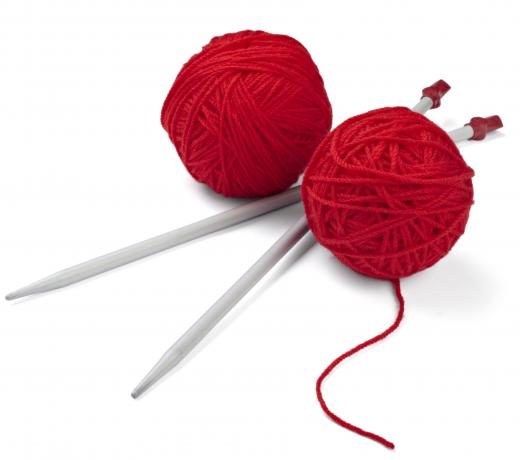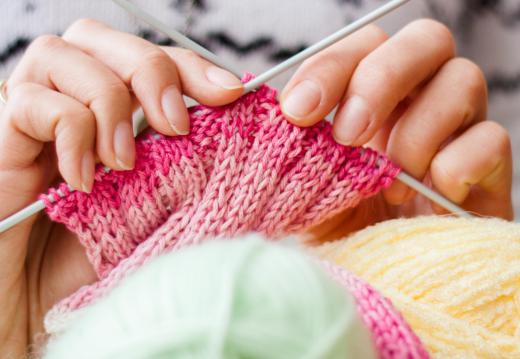People who practice knitting and crocheting as a hobby often buy enough yarn at one time for a complete project and from the same dye batch. This is because they don’t want to run the risk of buying a particular color, needing more, and finding that the yarn is a slightly different color from the yarn what they originally purchased. This happens because yarn is dyed in batches called dye lots. Each batch has a dye lot number and purchasing yarn from the same batch ensures that the color will be exactly the same. Some colors, however, are no dye lot yarn, which means that the yarn is spun from fiber that is already colored. No dye lot yarn should therefore be the same color from skein to skein.
Consistent Color is Important

Colors are hard to duplicate exactly from batch to batch. Needleworkers know this, so they often check the dye lot numbers against each other when purchasing yarn for a project. They need to know that the yarn color will be consistent throughout so that the slight color differences don't show up in the final product of their project. This is especially important for projects that are all one color, such as a solid color afghan.
Beneficial for Crafters

No dye lot yarn generally is sold in basic colors that do not have as much risk of variation from batch to batch. These colors typically include white, beige, navy blue and black. This type of yarn also is convenient, because if a crafter runs out of that color, he or she can be sure of getting a color that is very close to the original without searching through a store's stock of yarn and looking for the same dye lot number as the previous batch of yarn that was used.
Advantages and Uses

This yarn is exactly like other types of worsted yarn and can be used for any purpose for which dye lot yarn is used. One good use for it is as practice yarn for beginning crocheters or knitters. It is typically cheaper to produce and therefore less expensive. This means that if a crafter makes a mistake, he or she can simply throw the piece away without costing himself or herself a great deal of money.
Widely Available

Most discount stores and craft and needlework stores sell no dye lot yarn, and it also can be purchased from websites that sell needlecraft supplies. A skein of sport weight, worsted acrylic yarn is inexpensive and typically can be purchased for less than $5 US Dollars.
